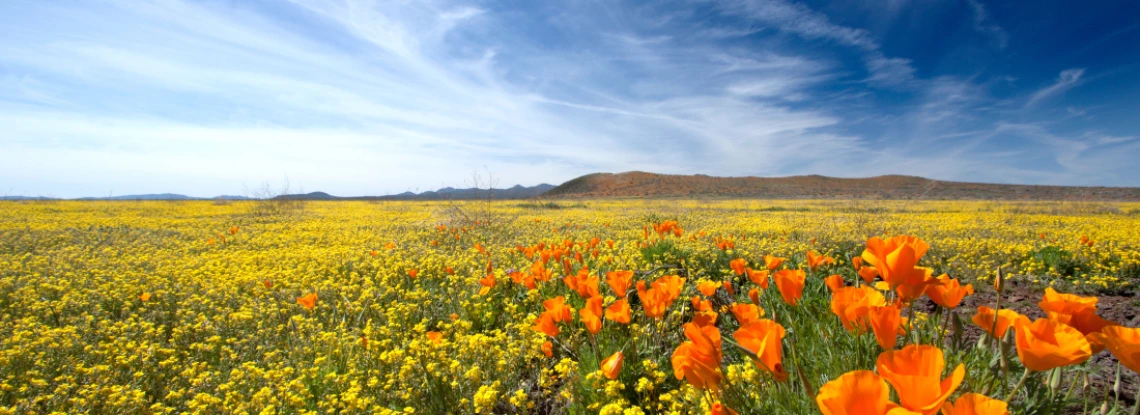It's decision time for Arizona's spring wildflowers

Alan Stark, Wikimedia Commons
Can Arizona expect a spring wildflower "superbloom" event in 2023?
March and April are peak months for showy annual wildflowers across lower elevations of the state. Periodically, the show is intense – colorful enough to be seen from space.
University of Arizona experts track multiple factors – primarily temperatures and precipitation over the previous winter, fall and even summer monsoon – that influence bloom events. They build databases and track historical records with the help of citizen observers to determine if conditions are right for a multicolored carpet on the desert floor.
But in the end, it's the plants that decide what kind of show they'll put on.

Theresa Crimmins
"We received good rainfall in October and then again in December, January and February, which are key ingredients to a good bloom event," said Theresa Crimmins, a professor in the UArizona School of Natural Resources and the Environment whose research focuses on phenology – the timing of seasonal events in plants and animals. "However, a few factors could impede a major flowering event, namely that November was dry, winter temperatures have been cool, and we had a wet summer last year, which can lead to heavy growth in summer annuals that can impede the germination of winter annuals. I think the fall and winter rains have set us up to have at least good pockets of flowering."
Scientists don't yet have the mechanism to accurately predict superbloom seasons, but the public can help, Crimmins said.
Crimmins is director of the USA National Phenology Network, which collects and shares information on when plants and animals undergo seasonal events like flowering and migration. These observations contribute to a massive resource used by scientists, government agencies, and many others to better understand events like spring superblooms and when they may occur. Her research has contributed to a greater understanding of how the timing of such events – phenology – is shifting under rapidly changing climate conditions.
Citizen scientists are encouraged to use the network's Nature's Notebook to record observations of plants and animals.
"Observations of when different species of plants are in flower, as well as when they are not in flower, help us to unravel the mystery of why superbloom events happen in some years and not in others," Crimmins said.
